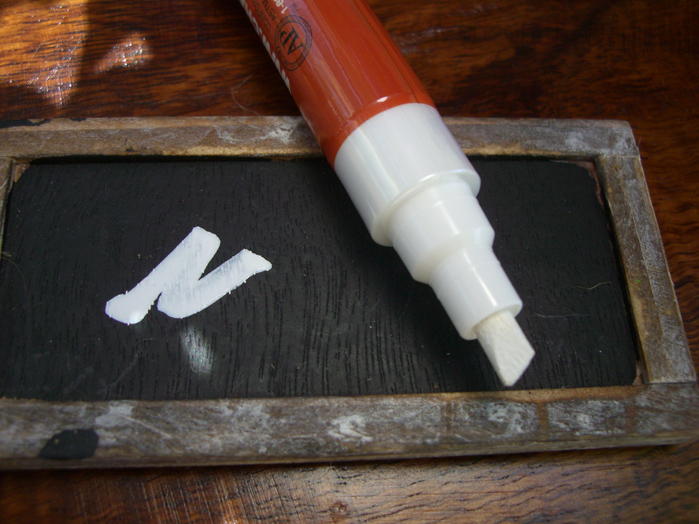Chalk Markers

Among the many new creative developments are the chalk markers. They are so far advanced from what we used, they're hardly the same genre. By the end of summer, we had a small bucket with an assortment of small "nubs" of chalk because of attrition and breakage. Not so with the new chalk markers. Traditional chalk is made of limestone powder. Most of this compressed powder comes from fossil shells.
Today's chalk markers are not dusty, so none of it ends up in our children's lungs. They are non-toxic and quite safe, and work on any non-porous surface. They can be used on traditional chalk boards and on surfaces painted with chalkboard paint, which is popular for use on the walls of kids' rooms, or as a kitchen memo wall. Writing on glass works quite well and on white marker boards also.
Another advantage they have over traditional chalk is their bright saturated colors. They are far superior for sign making. Chalk goes on sketchy and spotty, while the colors of the new markers go on opaque and brilliant. The one drawback is with unsupervised children, there is the possibility they aren't able to discern between a porous and a non-porous surface. The kids must be told exactly where they can mark or you may be putting your matte painted walls at risk.
